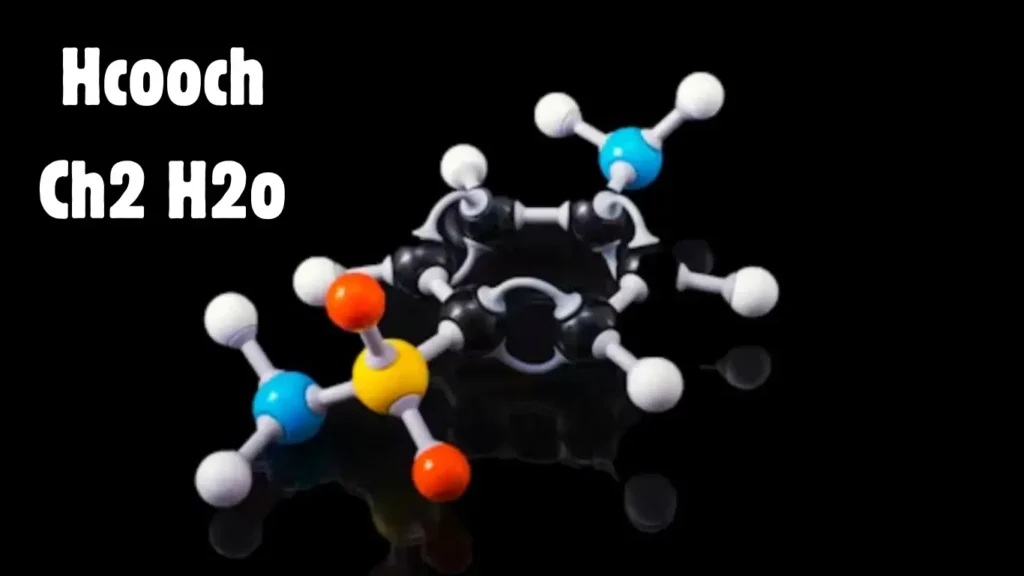Let me take you back to the moment I first saw HCOOCH CH₂ H₂O scribbled on the whiteboard in a cold classroom. I was 17, prepping for a college entrance test, staring blankly at symbols that made zero emotional or logical sense to me. I wasn’t the only one in the room feeling lost—my friend whispered, “Is that even a real reaction?”
This wasn’t just about memorizing another chemical equation. It was a struggle to make sense of something that felt alien. If you’re here, searching for “HCOOCH CH2 H2O”, maybe you’re feeling the same. Maybe you just want someone to explain it like a human, not like a textbook.
So let me walk you through it—not with heavy jargon or chemical theories—but with stories, clarity, and maybe even a little spark of interest.
Breaking It Down: What Is HCOOCH?
The formula HCOOCH refers to a compound called methyl formate.
It’s a small, colorless liquid with a fruity smell—used in fragrances, solvents, and even in making certain plastics. What makes it interesting is that it belongs to a group of compounds called esters. Esters are responsible for the sweet smells in perfumes and fruits like bananas and strawberries.
When I first handled methyl formate in a lab, the sharp scent caught me off guard. It didn’t just smell like a chemical—it smelled like something alive, something familiar. That moment changed how I looked at chemical formulas forever.
The Role of Water – H₂O in the Equation
Now comes H₂O, water. The simplest, most powerful substance on Earth. You might wonder, “What’s water doing in a chemistry reaction?” Well, in this case, it can trigger a process known as hydrolysis.
Hydrolysis means breaking down a compound using water. In our case:
HCOOCH + H₂O → HCOOH + CH₃OH
Methyl Formate + Water → Formic Acid + Methanol
Just like that, the ester splits into two smaller, meaningful molecules. One is formic acid, a naturally occurring acid found in ant venom. The other is methanol, also known as wood alcohol—used in fuel and industrial processes.
But What About CH₂?
Here’s where it gets a bit tricky. CH₂ is a building block—it shows up as part of many different molecules. On its own, it doesn’t usually exist freely. It’s likely that this part of the search term refers to CH₂ groups being part of a larger molecule or chain involved in a reaction.
You might be reading this in the context of:
- Synthetic chemistry (building more complex molecules)
- Exam questions showing incomplete or abstracted reactions
- Or simply trying to connect dots between multiple organic structures
Either way, CH₂ doesn’t stand alone—it’s usually just passing through, linking bigger pieces together.
Let’s Make This Human: The Real Feelings Behind the Reaction
If you’re still reading, thank you. That tells me you’re not just trying to cram for an exam. You want to understand. That’s where I connect with you.
I still remember the dread before every organic chemistry exam—feeling like I’d never fully grasp how these tiny molecules changed, combined, or broke apart. I wasn’t trying to become a scientist. I just wanted to pass. I wanted to feel smart—or at least not lost.
So when I finally understood that HCOOCH breaks down with water to form formic acid and methanol, it was like a light turning on. Suddenly, the formula wasn’t just code—it was a story of transformation. Something big becoming something useful.
And guess what? That’s what chemistry really is: transformation. Whether it’s a perfume molecule, a painkiller, or a fuel additive—it all starts with tiny, almost invisible reactions like this.
Everyday Applications – Why Should You Care?
Now you might wonder, “Okay, I understand the reaction. But why does it matter in real life?”
Here’s where it gets fascinating.
1. Fragrance Industry
Methyl formate is part of the production of fragrances. The breakdown products—like methanol—help synthesize aromatic compounds. That scent you love? It might’ve started in a lab with methyl formate.
2. Biofuels
Methanol, formed from this reaction, is a crucial part of biofuel technology. It’s cleaner-burning and helps reduce reliance on fossil fuels.
3. Chemical Manufacturing
Formic acid is used in leather processing, food preservation, and as a coagulant in rubber production.
4. Laboratory Learning
Reactions like this form the base of organic chemistry education. Understanding them helps you decode hundreds of similar ones down the line.
The Beauty of Simplicity
There’s something elegant about a simple ester splitting in the presence of water. It shows how chemistry doesn’t always need to be explosive or dramatic to matter. Sometimes, the quietest reactions are the ones that power entire industries—or simply get you through your school year.
I know how it feels to think, “This is just another random formula.” But now, you know better. You know what happens, why it happens, and most importantly—how it connects to the world around you.
Final Thoughts
You came here searching for HCOOCH CH2 H2O. Maybe you expected a short answer, a definition, a formula.
But what you got—hopefully—is a journey. A better understanding of a reaction. A feeling that you’re not alone in your confusion. That someone else sat at a desk once, just like you, trying to decode a string of letters and numbers and wondering, What does this even mean?
The truth is, every molecule has a story. And sometimes, all you need is the right explanation to unlock it.
Next time you see a confusing reaction, try not to fear it. Try to listen. Because hidden in those formulas is a language—a language that explains how the world works, one bond at a time.
